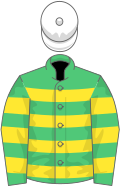| Class | Grade A |
|---|---|
| Location | Fairyhouse County Meath, Ireland |
| Inaugurated | 1870 |
| Race type | Steeplechase |
| Sponsor | Boylesports |
| Website | |
| Race information | |
| Distance | 3m 5f (5,834 metres) |
| Surface | Turf |
| Track | Right-handed |
| Qualification | Five-years-old and up |
| Weight | Handicap |
| Purse | €500,000 (2019) 1st: €270,000 |
| 2025 | ||
 |  |  |
| Haiti Couleurs | Any Second Now | Quai De Bourbon |
| Previous years | ||
|---|---|---|
| 2024 | ||
 |  |  |
| Intense Raffles | Any Second Now | Minella Cocooner |
| 2023 | ||
 |  |  |
| I Am Maximus | Gevrey | Defi Bleu |
| 2022 | ||
 |  |  |
| Lord Lariat | Frontal Assault | Gaillard Du Mesnil |
| 2021 | ||
 |  |  |
| Freewheelin Dylan | Run Wild Fred | Enjoy D'allen |
| 1990-1988 | ||
|---|---|---|
| 1990 | ||
 |  |  |
| Desert Orchid | Barney Burnett | Have A Barney |
| 1989 | ||
 |  |  |
| Maid Of Money | Candy Well | Have A Barney |
| 1988 | ||
 |  |  |
| Perris Valley | Captain Batnac | Feltrim Hill Lad |
The Irish Grand National is a National Hunt steeplechase in Ireland which is open to horses aged five years or older. It is run at Fairyhouse over a distance of about 3 miles and 5 furlongs (5,834 metres), and during its running there are twenty-four fences to be jumped. It is a handicap race, and it is scheduled to take place each year on Easter Monday.
Contents
It is the Irish equivalent of the Grand National, and it is held during Fairyhouse's Easter Festival meeting.









































































